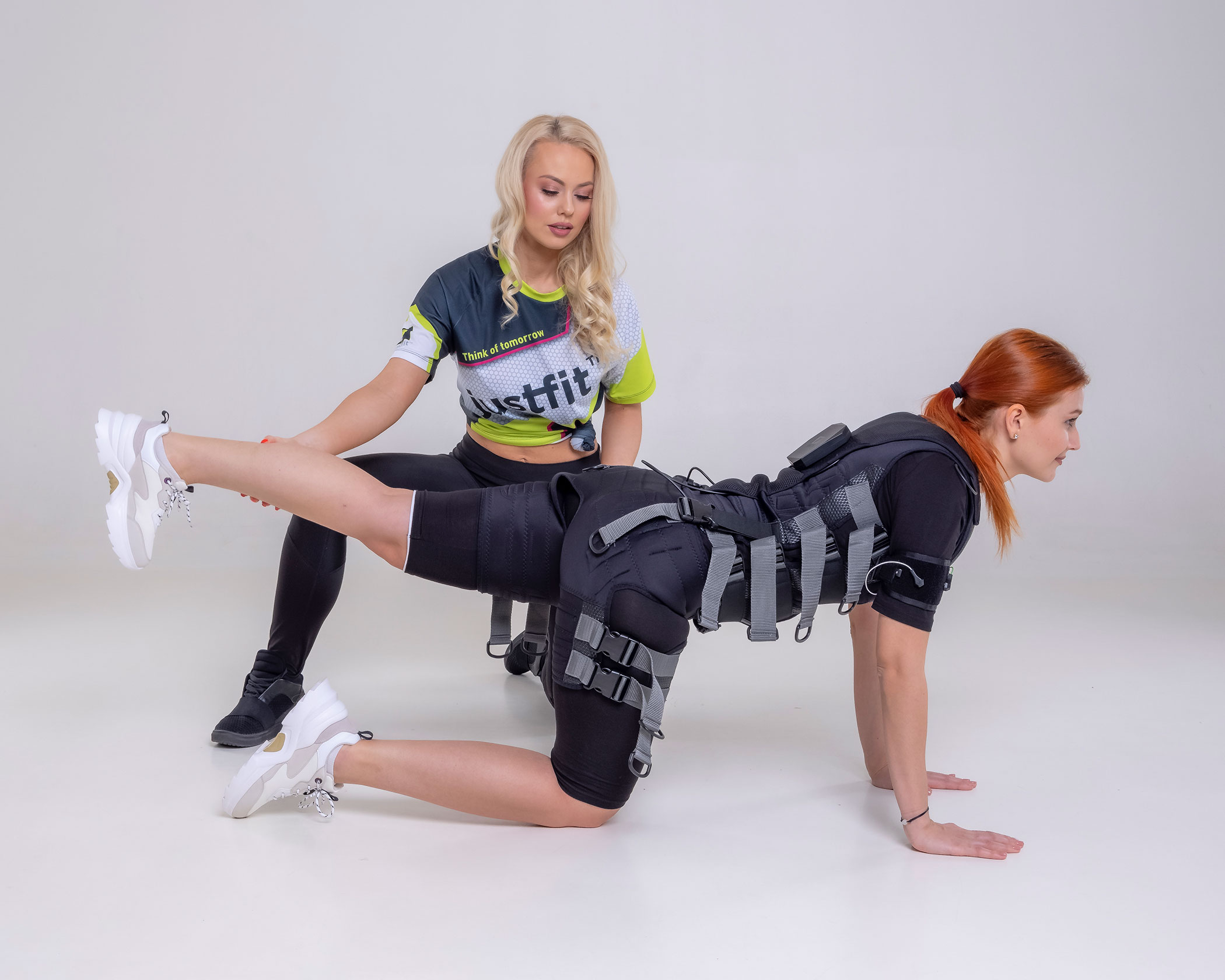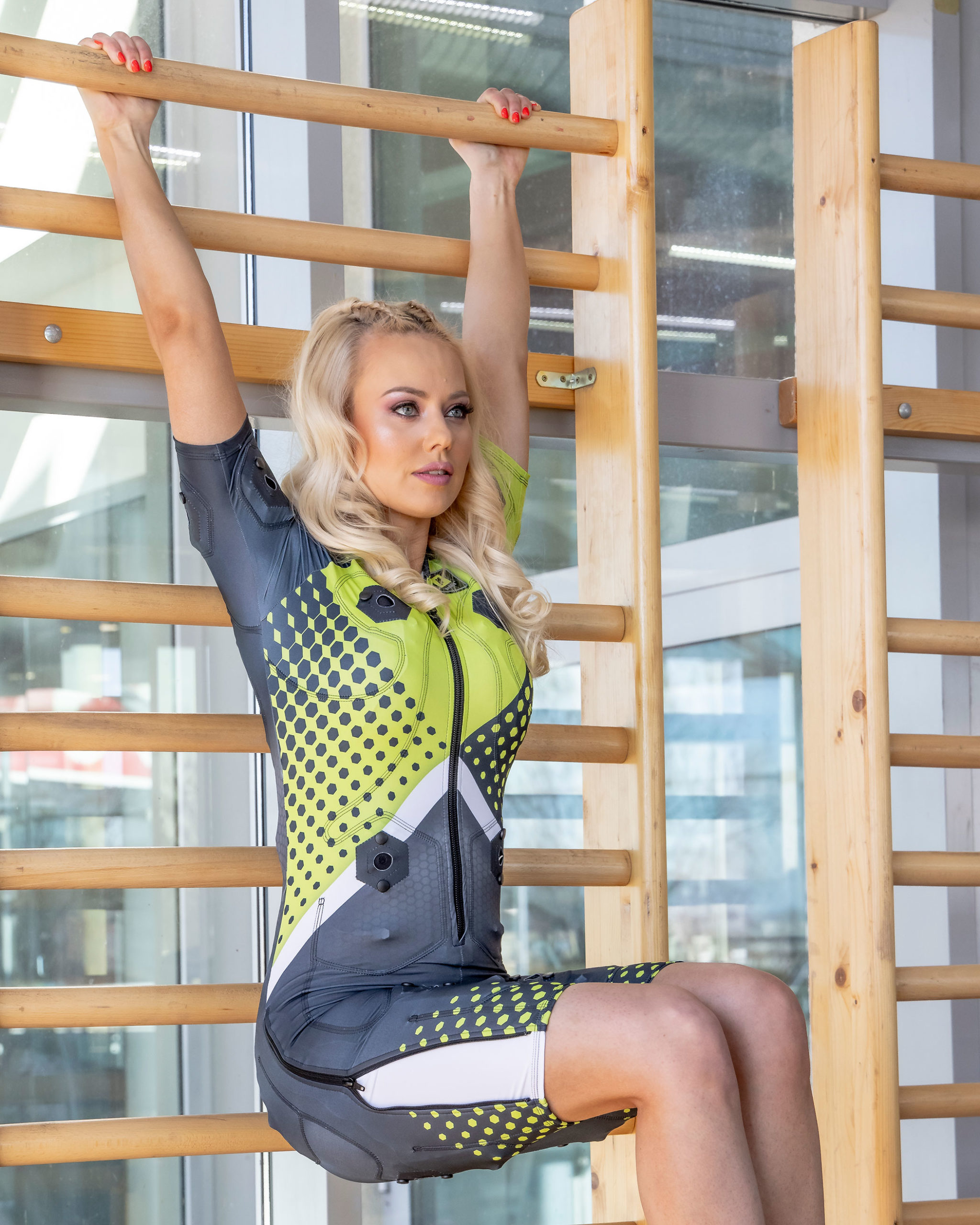Typically, an EMS training session consists of three stages:
1. Warm-up
In this stage it is necessary to warm up the joints and prepare the circulatory system for the training. This can be a general warm-up to involve the whole body in the training, endurance training, or even strength training if the first two exercises are performed with low but increasing effort.The optimal pulse frequency for the general warm-up is in the range of 1-10 Hz without a pause interval and with a depth of 350 ms.
2. Strength training
Static or dynamic strength exercises are performed using depth pulses. The choice of exercises depends on the type of training. The biggest differences between types of training lie in this part of EMS training: whether it is classic EMS training or functional training. Application of deep pulses with breaks in between. The training session is based on the “work-rest” principle. The exercises should be done during the time of the impulse break.
Strength training involves the fast-twitch muscle fibers.
In this case, a pulse with a frequency of 50-90 Hz is considered optimal. The golden mean is a frequency of 75 Hz with its maximum depth. I recommend working with a pulse-pause ratio of 4:4 or 5:5.
If the pulse interval and the pause interval are the same, this leads to increased muscle fatigue, oxidation and phosphocreatine – this is actually for healthy muscles with the development of muscle strength as the main goal.
Functional training also involves fast-twitch muscle fibers when developing speed and explosive power, for example.
The impulse with a frequency of 100-120 Hz and a depth of 350 ms is considered optimal for the development of explosive power. The pulse interval depends on the specifics of the exercises performed and the trainee’s level of training. I recommend a pulse interval of 2-4 seconds and a rest interval of 2-10 seconds.
Try to keep the pause interval as low as possible so that the exerciser can perform the exercises without exceeding their allowable pulse and comfort level.
When we increase the pulse interval and decrease the rest interval, our muscles usually fatigue more and the consumption of creatine phosphate and the intracellular pH increase. This is important for the development of endurance. Endurance training involves long repetitions with short intervals of rest. If the pulse interval is 8 seconds, then the rest interval is 2-3 seconds.
In this case, the slow muscle fibers should be involved. The impulse with a frequency of 10-20 Hz and a depth of 350 ms acts on them.
3. Lymphatic massage
In this phase, the mechanisms for the removal of metabolic products and the rapid recovery of the muscles are activated. This training stage could be combined with stretching.
The ideal pulse frequency for relaxation is 100 Hz with a depth of 150 ms. The ratio between impulse and pause is 1:1.
All EMS Justfit equipment, both corporate and personal products, can be configured to meet the client’s individual needs and goals.
Are you interested in Justfit technology and products from EMS? Do you need more information? Please contact us.




